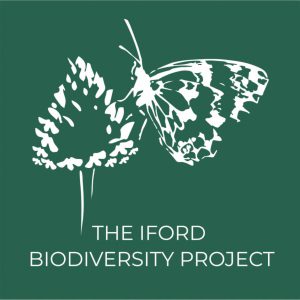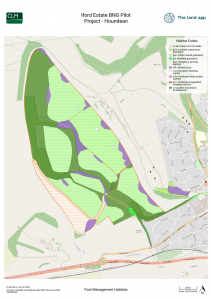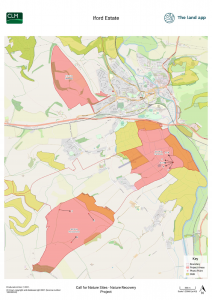Iford Estate
 Iford Estate aims to become an exemplar landscape restoration project.
Iford Estate aims to become an exemplar landscape restoration project.
Their ambitious plans will see about 800 hectares of land permanently dedicated to nature recovery.
The Estate aims to create bigger, better and more joined up habitats by creating and restoring chalk grassland, woodland, scrub and floodplain grassland, encompassing the whole landscape.
Carefully designed and located habitats will allow species to move across the Estate and colonise new areas, and will provide a reservoir of biodiversity to spread out over the surrounding areas.
However Iford Estate will still be producing food, deliberately allocating the best quality land to remain as arable land, the more marginal land will be once again used for low-intensity grazing, with the environment as the focus, not the livestock.
The expectation is to see large increases in the sort of rare species already seen in small areas of the farm, as well as lots of new ones.
The farm will become a haven for biodiversity and a reservoir from which it can spread out across the South Downs.
Biodiversity Net Gain (BNG) is the principle vehicle for delivering the investment to implement the changes, but as other forms of Natural Capital funding become available these will be explored as well.
The Estate has launched a dedicated website to promote and market these opportunities to developers and investors.
Contact the Provider
Ben Taylor, J&H Robinson (Iford Farms) Ltd, Iford, Lewes, East Sussex BN7 3EU
Email: enquiries@ifordbiodiversityproject.co.uk
or
Mark Alden, South Downs National Park Authority Consultancy Team
Email: ReNatureCredits@southdowns.gov.uk
Tel: 07850 570297
Location
Situated just outside Lewes at the Eastern end of the South Downs National Park, Iford has a diverse and inspirational landscape.
On a macro scale, the Lewes Brooks beside the river Ouse often floods, providing wetland birds with exceptional quality habitats.
The greensand ridge and spring-line villages sit at the foot of the Downs but off the floodplain, providing fertile arable land that has been farmed for millennia.
The chalk scarps of the Downs themselves are visible from far and wide and help define the landscape of this part of the National Park, with breath-taking views of the Ouse Valley and the coastline, and beyond the scarp slope rolling steep sided valleys provide a characteristic downland landscape.
Separately, the secluded valley of Houndean Bottom immediately west of Lewes town is more wooded and is well known to the residents of Lewes who enjoy its tranquil beauty.
On a micro scale small areas of diverse habitat provide not only quiet places to stop and enjoy the views but also exceptional places for the rare species found on the Estate.
It is this combination of secluded intimate spaces and majestic landscapes which have inspired generations of artists and writers including Vanessa Bell, Duncan Grant, Virginia Woolf, Eric Ravilious and Rudyard Kipling.
Habitats and species
The Iford Estate has a well established reputation for important habitats.
Recent surveys have revealed over 1300 species present on the Estate, many with conservation status, including 155 species of birds of which 87 are of conservation concern.
The Lewes Brooks SSSI supports a wide range of invertebrates, including water beetles, several rare snails, flies and moths.
The rich habitat created on this part of the farm attracts a huge number and variety of birds including Lapwing.
The Iford Hill SSSI in the centre of the farm is particularly valued for its flora and is one of the few sites in the country where Round-headed Rampion flourishes.
It provides important areas of chalk grassland, a habitat which is becoming increasingly rare and one which supports a wealth of invertebrates including particularly threatened species such as the wart-biter cricket, the blue Adonis and small blue butterfly.
Other key species recorded at Iford include stone-curlew, quail, peregrine falcons, hobby, barn owl, hen harriers, Montagu’s harriers, merlin, corn buntings and wheatear.
Background
Joseph Colgate Robinson, a Quaker and philanthropist, founded the Iford Estate in 1895 and was noted for his social responsibility; all employees and widows having a rent-free house for life being just one example.
Henry Colgate Robinson, the second generation farmer of Iford was a passionate and knowledgeable naturalist and conservationist who introduced environmentally sensitive farming methods.
John Robinson, the current owner, is the third generation to proudly farm in accordance with the values and principles established by his father and grandfather.
John’s goal is to hand over to his successors at Iford a place that his grandfather and father would both recognise and approve of.
He is supported by knowledgeable estate manager Ben Taylor who comes from a long line of farmers connected to the South Downs National Park.
Restoration Plan Maps
The Iford Estate’s restoration plan area for Biodiversity Net Gain (BNG) is in Houndean (map 1) with further BNG plans for the wider estate in the future (map 2).
Our role in BNG
The SDNPA has a financial interest in particular Biodiversity Net Gain (BNG) schemes. This includes the Iford Estate BNG scheme.
We receive remuneration for consultancy and support services offered to certain BNG schemes by way of a % commission on the revenue generated through sales.
This commission is calculated to cover our costs only and does not alter or inflate the cost of the BNG Units to potential purchasers.
For more information regarding these arrangements please view our role in BNG.


